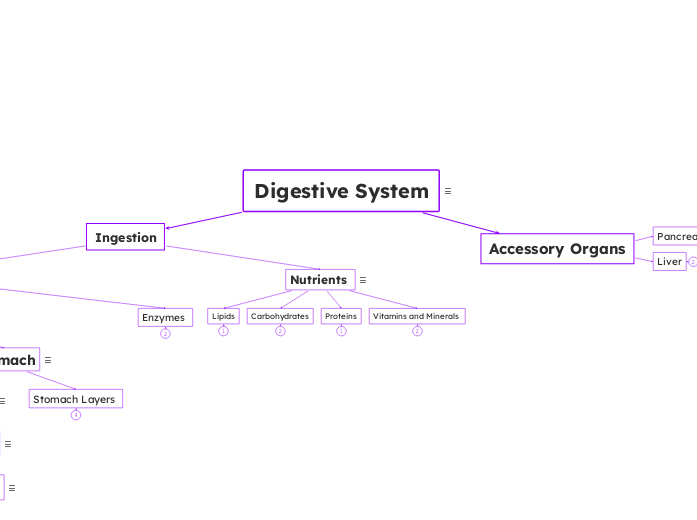Digestive System
The Digestive System is responsible for the chemical and mechanical breakdown of all food that goes in and out of our body!
Ingestion
Mouth
Ingestion begins in the mouth, where the food is broken down mechanically and chemically, our teeth are used to mechanically break down each food chunk into smaller pieces, making it easier for us to use our salivary glands and enzymes to break down this food!
Metabolism
Metabolism is the process of taking food and turning it into energy! you may have heard people say they have a high or low metabolism. well if a person has a high metabolism that means they burn more calories and need more food to convert it into energy and if they have a low metabolism that means they burn fewer calories therefore they don't need more food to convert into energy
Anabolism
Catabolism
Esophagus
The food stretches the wall of the Esophagus which initiates the smooth muscles to undergo rhythmic, wave-like contractions called peristalsis sphincter, which is a circular muscle, that contracts to close an opening in the body. The Esophagus is located at the center of our chest also known as the mediastinum.
Sphincters
Stomach
The Stomach is located in the upper left area of the abdomen below the liver, the function of the Stomach is to break down the food that we ingest using gastric acid which is built up with gastric lipase and pepsinogen. the food we eat that's in our Stomach activates nerves which increases muscular contraction which mixes food with gastric juices
Small Intestine
The Small Intestine has three parts, the duodenum, jejunum, and ileum these parts function together to help further digest food coming from the stomach. the small intestine also absorbs nutrients (minerals, vitamins, proteins, etc.) Absorption in the small testing takes place using passive transport which is the movement of material across the cell membrane without using energy from the cell, this happens in the jejunum and small molecules like glucose and lipids.
Large Intestine
The large intestine is a long tube-like organ located in the lower abdominal cavity and it ends at the anus, its 3 primary functions are absorbing water and electrolytes, producing and absorbing vitamins, and forming and moving feces to the anus for elimination.
The Rectum
The Rectum is where all the food waste is stored and prepared to move to the anus for defecation!
Anus
The Anus which is the end of our large intestine, is where all the food waste that has been mechanically processed and chemically digested goes to get defecated!
Stomach Layers
Enzymes
Nutrients
Nutrients are essential for an organism's survival, growth, and reproduction. an example of some nutrients are carbohydrates, lipids (fat), proteins, and vitamins + minerals!
Lipids
Carbohydrates
Proteins
Vitamins and Minerals
Accessory Organs
Pancreas
Liver
